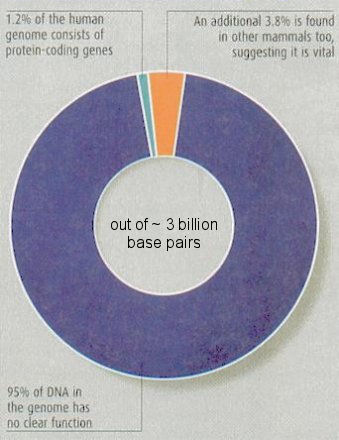
'The next great war will start inside us. 'In the next stage of evolution, mankind is history'.
About 95% of the human genome has once been designated as "junk" DNA. While much of this sequence may be an evolutionary artifact that serves no present-day purpose, some junk DNA may function in ways that are not currently understood. The conservation of some junk DNA over many millions of years of evolution may imply an essential function that has been "turned off." Now scientists say there's a junk gene that fights HIV. And they've discovered how to turn it back on.
What these scientists have done could give us the first bulletproof HIV vaccine. They have re-awakened the human genome's latent potential to make us all into HIV-resistant creatures, and hey've published their ground-breaking research in PLoS Biology.
What these scientists have done could give us the first bulletproof HIV vaccine. They have re-awakened the human genome's latent potential to make us all into HIV-resistant creatures, and they've published their ground-breaking research in PLoS Biology.
Read more...
About 95% of the human genome has once been designated as "junk" DNA. While much of this sequence may be an evolutionary artifact that serves no present-day purpose, some junk DNA may function in ways that are not currently understood. The conservation of some junk DNA over many millions of years of evolution may imply an essential function that has been "turned off." Now scientists say there's a junk gene that fights HIV. And they've discovered how to turn it back on.
What these scientists have done could give us the first bulletproof HIV vaccine. They have re-awakened the human genome's latent potential to make us all into HIV-resistant creatures, and hey've published their ground-breaking research in PLoS Biology.
What these scientists have done could give us the first bulletproof HIV vaccine. They have re-awakened the human genome's latent potential to make us all into HIV-resistant creatures, and they've published their ground-breaking research in PLoS Biology.






.png)





No comments:
Post a Comment